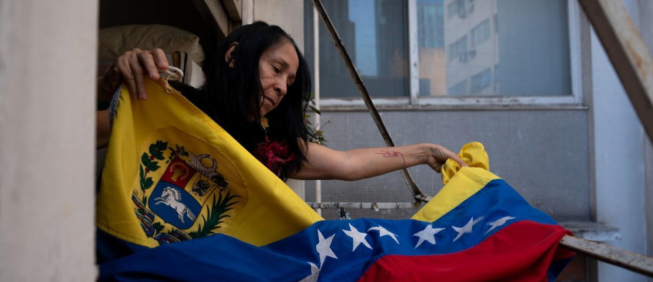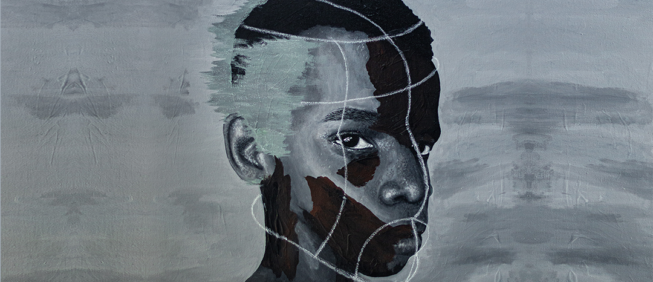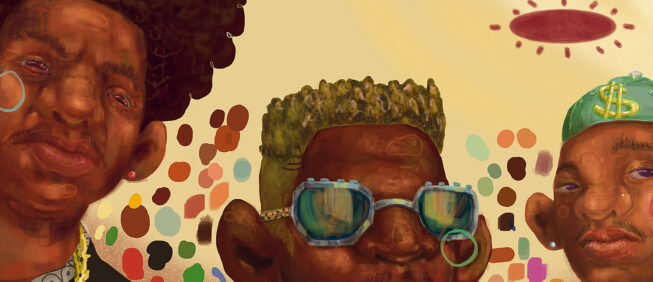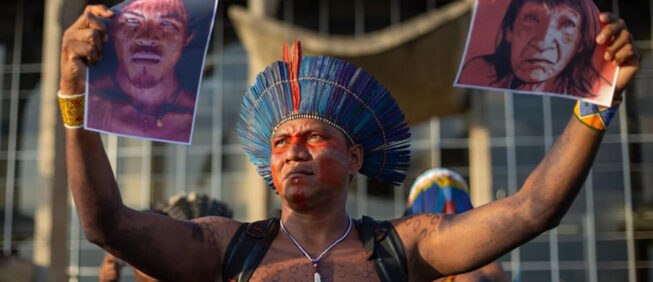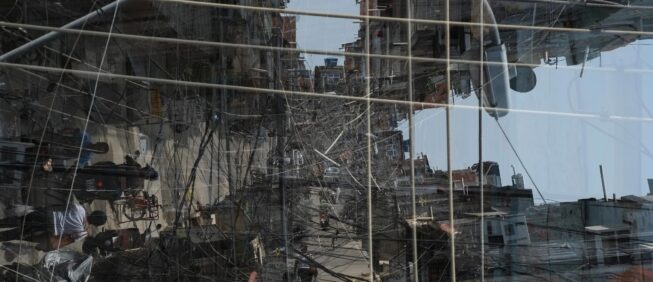“The science of nurturing” and school climates
William Corrêa de Melo
| Brazil |
18 de December de 2019
translated by Edmund Ruge
Abstract
This article is adapted from the research project “The Science of Nurturing and School Climates: (Re)thinking Black Masculinities in Public Schools,” developed in partnership with UNIperiferias with support from 2019’s ten-month “Researchers in Basic Education” grant, guided by the following research question: What are the relationships, according to the perceptions of teachers, managers, and (most importantly) students in the Clério Boechat de Oliveira Municipal School in the city of Maricá, that make up nurturing strategies, with a focus on (primarily black) boys, in the school climate?
The Potency of Nurturing Relationships in the Classroom
The central argument is that students feel embraced by nurturing strategies, especially when there exist high educational expectations and positive stimuli (compliments, etc) and efforts toward approximation and student engagement in school processes. These positive perceptions create possibilities for relationships that favor the teaching and learning process and broaden students’ motivation to be present and engaged in class, participating and retaining responsibility in school, which also favors students with more vulnerable profiles, who are more likely to demonstrate low performance, to be held back, and to experience higher truancy levels. I argue that the “Science of Nurturing” (educational methodology detailed below) and other methodologies that aim to stimulate nurturing relationships between teachers and students affect youth with higher truancy levels.
In the following section, I present the research’s underlying debate, founded in the perspectives of the Sociology of Education and Anthropology of Education.
1.1. Social origin and performance: the current debate on educational inequality and the place of schools
Schools make a difference in educational trajectories. This is the argument of studies published, principally, beginning in the 1990s, which demonstrate that schools are capable of reducing the impact of social and familial origin in student trajectories: the so-called “school effect” (Brooke and Soares, 2008). Elements such as high educational expectations and social support from teachers have a positive impact (Brooke and Soares; Alves and Soares, 2003; Fernandes et. a. 2018).
This generation of studies in the field of education begins to analyze public schools as Potent, reflecting the Peripheral Potencies that they receive. In speaking of these Potencies of the Peripheries and of public schools, Fernandes, Souza, and Barbosa (2018) argue that:
a recognition of the inventive power of groups marked by social inequality and stigmatized by violence -- and more broadly, of the urban peripheries -- must be used as a reference for the construction of the “Paradigm of Potency.” It is through this mechanism that life style (rather than life conditions) may be recognized on those groups' own terms (rather than compared to the hegemonic forms present in the city).
As this article will focus on questions of race and gender, I will next present a bit of this debate in the field of Brazilian education, spanning the themes of academic failure, truancy, and academic performance.
1.2. Race1Here, we treat race as “social race” and not “biological race,” maintaining skin color as a measurable criterion, a priori, as per the classifications of the Brazilian Institute of Geography and Statistics. However, paraphrasing Abdias do Nascimento, I emphasize that race is much more complex than skin color: “It is a fact that no scientist or science, manipulating concepts such as phenotype or genotype, can deny the concrete fact that, in Brazil, one’s brand is determined by the ethnic/racial factor. A Brazilian is designated as preto, negro, moreno, mulato, crioulo, partio, mestiço, cabra, or whatever other euphemism, and everyone understands immediately, without any doubt, that this is a man of color. That is, the person in question is descended from African slaves. This person is, therefore, black. The gradation of his skin color does not matter (Nascimento, 1978). , gender, and student trajectories
Academic failure remains a major challenge for Brazilian education, especially in the final years of Middle School (from 6th to 9th grade), affecting poorer, black, male students disproportionately, in something of a filter in Brazilian education (Tavares Jr, Mont’alvão and Neubert, 2015; Castro e Tavares Jr, 2016).
Studies in the sociology of education seek to understand the factors behind the probability of failure, and tend to indicate that perceptions of gender and race identity help to explain the relationship between variables and chances of academic success/failure (Alves and Soares, 2002; Carvalho, 2005).
Nilma Lino (2003) has reflected that early training for teachers demonstrates a lack of debates on questions of race and socially constructed images of the black body. According to Carvalho (2005): “There is a social image of black masculinity, present in a marked way in Brazilian media, that associates it with violence and aggression” (p. 7). The author compares the racial auto-classification of children with the racial hetero-classification conducted by their teachers in a public school network in the state of São Paulo and demonstrates that teachers classified their male students as more undisciplined, indicating a relationship in which perceptions of discipline are associated with gender. She shows that there exists no such relationship, in the school she researched, between perceptions of discipline and race. On the other hand, she shows that teachers classified more boys as black, and fewer girls as black.
Carvalho (2005) also shows that teachers classified their higher-income students as “lighter-skinned.” Furthermore, the author shows that teachers also considered school performance in classifying children as black or not. Among the children perceived to be white, there was a lower percentage of high-income students than low-income students. On the other hand, 40% of children with higher-income students perceived to be black took part in a school tutoring group, revealing a certain level of independence between skin color and socio-economic level in the perceptions of teachers. And yet, “37% of white students and only 20% of black students (hetero-attributed) with income levels above ten minimum salaries were complimented as good students” (Carvalho, 2005, p. 13).*
And school climate? How does this enter into this debate?
1.3. School climate: definitions and evidence
Defining “school climate” is not simple. For some authors, such as Loukas (2007), it includes feelings and attitudes provoked by the school environment. Loukas argues that schools that are able to generate a positive perception around this climate are capable of compensating for the difficulties of learning for students with lower performance, in relation to their behavioral and emotional problems. The author defines three axes for school climate: physical dimension (quality of infrastructure), social dimension (quality of interpersonal relations in school and equal treatment among students), and academic dimension (quality of teaching, academic expectations in relation to performance and monitoring of student progress).
A feeling of belonging and reception is fundamental in defining a school’s climate. This article works with Loukas’ 2007 definition, especially in its social and academic dimensions, principally in the context of the classroom, as that is my main location of action and analysis, allowing that school climate includes relations beyond this space.
Despite the difficulty in defining school climate, work on the theme demonstrates its positive effect. Loukas (2007) argues that strategies that improve school climate tend to favor all students, and mainly students at risk. Oliveira et al (2013) have indicated that, using data from the Prova Brasil test of 2009, schools with good academic climates (with good educational expectations in relation to students and progress monitoring) and good disciplinary climate, beyond those that establish strategies for the involvement of families, demonstrate better performance. In schools with negative or non-proactive climates in relation to parent involvement, the percent of students with adequate levels of learning was lower.
Fernandes et al (2018) show, based on an analysis of 311 schools in Rio de Janeiro, that the perception of students around what was called “social support from the teacher” was a predictor of performance, with positive effects. This is related to the social dimension in the school climate, according to Loukas (2007), and the “Science of Nurturing,” to be detailed below, seeks to stimulate principally this dimension of the school climate, accompanied by the academic dimension.
1.4. The Science of Nurturing2“Afeto” [here translated as “nurturing”] as a concept is difficult to define, as is “school climate.” Here, we treat it as synonymous for socio-emotional abilities such as empathy, altruism, responsibility, resilience, proactivity, team spirit, and cooperation, among other things.: What is it?
The “Science of Nurturing” is a combination of educational strategies I have adopted as a science teacher at the Clério Boechat de Oliveira Municipal School of Maricá, in Rio de Janeiro in order to foster a positive school climate. I teach classes for 6th, 8th, and 9th grade, and these strategies include:
a) Maintaining a high and explicit expectation of the students, emphasizing positive stimuli and partnership
I say, regularly, that I trust in the potential of all my students, and that I am there to help them explore their potential to the maximum, so that they may be a reference wherever they are, especially in the academic-professional field. I greet each one with hugs at the beginning of my classes, asking how each of them is doing, telling them that I am there if they need me. I emphasize that we are a team.
b) Establishing rules of coexistence, with a focus on learning
1 - Respect in speaking and listening
2 - There exists a right time for each thing
3 - Acts of discrimination and bullying will not be tolerated
4 - Limits on the use of cell phones
5 - Ask permission to leave the classroom
These were established in the first class with each grade. They are consistently held accountable and their fulfillment is evaluated throughout the trimester, making up part of their grades.
c) Meditation
I conduct breathing and relaxation exercises with my classes, guiding them to take note of their bodies in their chairs, offering positive words, reminding students that they are capable of arriving where they wish, among other things. My ninth-grade class has come to expect this practice, which reduces classroom unrest, especially for my sixth-grade class.
d) Arts Education - Didactic Rap
I use rap to teach certain content, and I do this with the goal of deepening my relationship with my students. This favors the creation of other strategies. Rap is a peripheral language, and an important element of global black music. I seek to value the language of rap, with its slang and other textual characteristics, with the rhymes and flows of each song. I a didactic rap composition exercise with my eighth-grade class.
e) Notebooks with compliments and areas to be improved
These notebooks were created as an alternative to the “activity log,” common in schools. The proposal is to register compliments about the students, and, as suggested by one of my ninth-grade students, I have also included areas where students need improvement. The students themselves define, trimester after trimester, these compliments and areas of improvement, both with my help and the help of their classmates.
f) Evaluation of nine behavioral categories
In the Maricá municipal education network, we conduct, each trimester, at least three evaluation instruments: AV1, AV2, and AV3. AV1 is behavioral. Given that the research literature on education indicates that black boys are the most punished in school, and that there is evidence showing that this occurs due to perceptions constructed around race and gender, I opted to make “behavior” objective, operationalizing this concept. As such, at the end of each trimester, I evaluate adherence to the rules above on a scale of one to four, in addition to proactiveness, collectiveness, the completion of activities, and a complete notebook. In addition to evaluation, I inform students of the aspects they can improve upon in relation to these behavioral abilities, always offering positive stimulus, reminding them that they are capable and that that is why I guide them and hold them accountable.
g) Individual and group feedback around performance, as much in the area of cognitive performance as in abilities such as proactiveness and collectiveness.
I log both individual and group performance levels for AV1, AV2, and AV3 in an excel spreadsheet, indicating to my students, what activities they have not turned in and their performance on those that were turned in. I have sought, also, to create graphics to show the variation in performance (using my own evaluation instruments, which I look to diversify), and measurements of inequality among boys and girls, whites and non-whites (based in hetero-attribution, and I maintain a racial self-declaration questionnaire in order to avoid hetero-classification).
h) Strategies for engaging with families
I have looked to involve families in quiz-taking and student activities, in such a manner that students have the opportunity to call someone from their family for support in undertaking activities. As of now, I have only done this on quiz days, calling around seven families.
On the day of the quiz, students are allowed to choose a question and call a family member, either from their cell phone, or mine when necessary. I speak with the family outside the classroom over speakerphone, so that the student can hear (appointing an inspector to take over for me in proctoring the quiz). After reading the question, the family member has three minutes to help and respond. The intention is not that the family responds correctly, but that they participate in the game and support their children in the teaching and learning process, even if that support is emotional/nurturing.
Articles about the quiz in which students can ask for help from their families: (Links https://www.almanaquesos.com/professor-prova-aluno-ajuda-familia-quem-quer-ser-um-milionario/ https://www.marica.rj.gov.br/2019/09/26/professor-usa-game-em-aula-e-bomba-na-internet/)
i) Nurturing circles
After the second trimester of 2019, I began, in partnership with Uniperiferias, “Nurturing circles,” moments in which we take a break from curricular activities in order to debate some topic of social relevance, seeking to maintain nurturing as a base for the process and the themes. As of now, we have done two, with eighth grade and ninth grade: a debate on masculinities and a screening of the film O Silêncio dos Homens and another about non-violent communication and Afrofuturism.
2. Research Methodology
The research used an ethnographic methodology with participant observation. In addition to day-to-day observations in my school, we (myself and Uniperiferias) held a group conversation with teachers and managers on one of the “academic Saturdays” around nurturing strategies and collective wellbeing in school, with a focus on the theme of masculinities through the film O Silêncio dos Homens, which allowed me to observe and obtain some results. With my 8th and 9th grade classes, I observed the “Nurturing circles,” as well as asked for thoughts around the film, asking also how they see themselves in the future. I also asked students, in a moment that I called “compliment day,” for written narratives around the role of nurturing in their lives, especially in the construction of their identities (of race, gender, etc…). This also allowed me to capture some of the possible relationships they have with the school climate, especially in the social dimension.
The majority of the data is still in the production and analysis phase. Below, I present some of the preliminary results.
3. Preliminary results
I have seen positive reactions in all grade levels, from boys and girls, black and non-black, around the “science of nurturing,” in each of the dimensions. The boys have demonstrated that they enjoy didactic rap and I already have some testimonials on the strengthening of relationships between them and me, such as that of Bruno, a ninth-grade boy who I classify as white. When the entire class resolved to tell me how important I am in their lives, Bruno said, spontaneously: “Teacher, remember that day that I called you on Whatsapp? It was to tell you how special you are to me. I can’t say that about other people, but you are special in my life.” Bruno also said that he likes the fact that, in my classes, I always want more from my students, as I believe that they are capable of going farther.
Flávio, a ninth-grade boy entering the second trimester of 2019 who I classify as black, said: “When I got here, you came to me and wanted to know where I had come from, where I was from, what my personality was like. I thought that was incredible. It’s different from the other teachers, who just ask our name and that’s it.”
Then there is Yan, a sixth-grade boy who I classify as black. After I asked him to turn in work he owed me and told him he was capable of demonstrating greater behavior and doing more than he knows, he said: “Teacher, you communicate well with us.”
These kinds of statements that highlight the quality of exchange between teacher and student that I have sought to construct occur regularly in my day to day life with my students, but in person and on social media. In the case of an eighth-grade boy that I classify as white, he noted my attention and care in preparing for class. Another black boy from the same grade said that he loved me on social media, spontaneously, in response to a personal post of mine. I have still seen a difficulty in obtaining masculine narratives, something I anticipated owing to the context that I’ve explained here, but the results are coming: narratives are appearing little by little. What catches the eye is that the quality of interpersonal relations between teachers and student gains depth in our classwork. The perception of my students that I am making a major effort generates, in my perception in the research, a mutual accountability toward cooperation, though not without difficulty. It is a progressive, individual, and progressive understanding that the pedagogical relationship is a two-way street and high expectations from the students favor the construction of positive perceptions around their own capacity and the possibility of improving, as Marcos, a black boy in eighth grade reported in the “compliments book.”
“In the first trimester, professor William helped me, showed me where I needed to improve to pass, but thanks to him and to his counsel, I was able to. Thank you, teacher, for having helped me.. In the second trimester, I passed but could have gotten a better grade.”
Another result that I highlight is the influence of nurturing on the student life of the kids and their perceptions about this nurturing as they act in the school climate, especially in the social dimension. This is seen in two moments, in the “compliment day” in which I had students compliment one another, in the context of Yellow September, and in the narratives students wrote about this day, in which I asked them to write about the influence of nurturing in their lives and the construction of their identities, as described in the methodology.
On “compliments day,” students from eighth and ninth grade surprised me with compliments about me and my work, with various paper fliers with positive words, highlighting the quality of teacher-student relations, which, according to Loukas (2007), is part of a social dimension in the school climate. The majority highlighted the feeling of receptiveness and support that they receive in science class.
In the narratives written about nurturing in their lives, some black students wrote of the importance of nurturing in combatting racism and discrimination, “whitening” and in pushing them to pursue their dreams. Leandro, an eighth-grade black boy, wrote:
“Compliments day was really good for some people like me, to know that there are many people that love them, because there are some days that I feel like shit but I always have a friend to give my advice and to give me strength and I can only thank him for that. I think that compliments day is really good and something that I learned is to never give up on your dreams.”
Leandro and Marcos are almost always together in school and in the “compliment day” dynamic, I asked them to compliment one another. Since Leandro’s narrative here is about “compliment day,” he probably, when he says “I have a friend to give me advice” is referring to Marcos, showing the nurturing between the two black male youth and that this is clearly seen as important for the trajectory for at least one of them.
Even given the limits of our research, the data indicate that the “science of nurturing” tends to dispute these students in the probability of truancy (corroborating the research’s argument). In the words of a ninth-grade girl who I classify as white: “teacher, without you, there is no 9th grade (...), you are different… Thursday and Friday, people say they want to go to school because those days there is William’s class.”
I have noted through these actions and research that, if we view public schools as potency, students come to see it that way as well.


